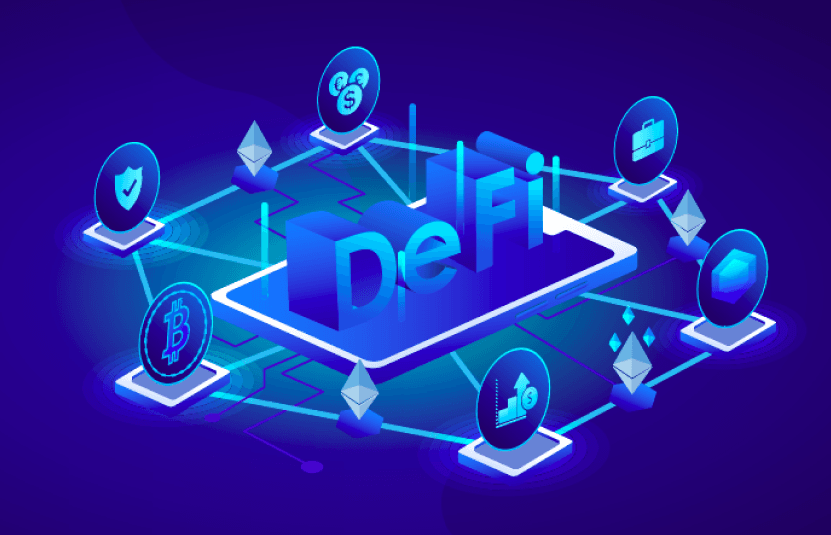What’s Defi?
Welcome to the world of Decentralized Finance (DeFi)! It's a dynamic, decentralized public finance ecosystem mostly rooted in public blockchains like Ethereum. Today, DeFi revolutionizes financial services ranging from lending, loans, installments, to trade and beyond.
What Does Decentralized Mean?
In the context of DeFi, decentralization denotes an environment where there are no official representatives or control in any country. It's all about the power of the blockchain, effectively placing the average person on par with bankers without all the cumbersome middlemen and processes.
DeFi is often associated with “blockchain”, a term that refers to the decentralized, immutable public ledger famously used by Bitcoin. Ideally, this ledger of transactions should be immune to alterations by any single person or organization. And thanks to the wonders of Smart Contracts, this ideal world is well within our grasp.
What are DeFi Benefits!
DeFi is popular for a reason. It offers a whole host of benefits.
- Full Transparency — The code of every DeFi system is open for audit. This means users can inspect it, and even identify potential bugs.
- Self-governance and Decentralization — The absence of a governance structure means all “management” happens through smart contracts.
- Multi-accessibility — DeFi services are accessible to every internet user, regardless of their location.
- System Flexibility — The open system code allows anyone to create their applications or operations.
For instance, you can write a smart contract to manage borrowing and lending. Say a user borrows against a smart contract and deposits cryptocurrency as collateral. If they fail to repay within the agreed timeframe, their collateral will automatically liquidate to cover the loan. This sequence is ensured by a program (dApp) written on the Blockchain and is unstoppable, even by the program's author.
Let's delve deeper into Smart Contracts and their importance.
What are Smart Contracts?
Smart Contracts are, in essence, digital agreements. Like any contract, they stipulate the terms of an agreement, but the main difference is they run on blockchain instead of paper, hence their moniker.
Smart Contracts history:
Nick Szabo, a computer scientist, and lawyer introduced the concept of smart contracts in the 1990s. His famous analogy equated smart contracts to a vending machine that sells soda cans.
“If you put a dollar in and choose a soda, the machine is programmed to deliver the drink, and 75 cents change or encourage you to make another option or return your $1. This is a simple, smart contract. Smart contracts, like a Coke machine, can automate nearly any deal”.
Although Ethereum is the most popular platform for smart contracts, platforms like Tezos, Tron, EOS, and Algorand can also host them. Their code is transparent and verifiable, enabling anyone to observe how a smart contract operates. Languages such as Solidity, Rust, Go, among others, can be used to write smart contracts.
The execution of smart contracts requires a “gas” fee on the Ethereum network. These contracts are immutable once implemented, meaning they can’t be restricted, shut down or modified, even by the original author. This immutability underscores the importance of careful selection of a development team.
But Why Are They So Important to DeFi?
Decentralized apps and tokens are built using smart contracts. All of which are stored on a blockchain, just like any other crypto transaction, from new financial tools to logistics and game experiences. In most cases, once a smart-contract app has been added to the blockchain, it can’t be reversed or modified (although there are some exceptions).
Apps powered by smart contracts are referred to as Decentralized Applications or “dApps” — and include decentralized finance (or DeFi) technology that aims to revolutionize the banking industry. Cryptocurrency holders can use DeFi apps to carry out complex financial transactions, such as securing loans and insurance, without the involvement of a bank or other financial institution.
Common use cases of Defi in 2022
Lending Platforms
DeFi loan and borrowing services are among the most traditional features available to cryptocurrency consumers. Borrowers can use their Bitcoin holdings as collateral to borrow money in other currencies if they have significant amounts of cryptocurrency. Individuals can profit from the value of their cryptocurrency assets without triggering taxable events by lending their bitcoin deposits to borrowers.
Since the supply and demand of cryptocurrencies affect interest rates, the dApps that enable decentralized borrowing and lending can automatically alter rates.
Stablecoins
Creating Stablecoins, otherwise known as digital currencies with fixed values, was one of the initial uses for DeFi technology. As a result of its lower volatility than other cryptocurrencies, stable coins are commonly used for everyday purchases.
DAI, a Stablecoin, is pegged to the dollar; the coin is backed by the native Ethereum token Ether and issued by open-source Ethereum blockchain project MakerDAO. To maintain DAI’s value in the face of volatile Ether prices, the token is overcollateralized with Ether.
Decentralized Exchanges
Decentralized exchanges, or DEXs, are peer-to-peer markets where cryptocurrency traders can conduct transactions without entrusting the management of their funds to an intermediary or custodian, as is the case with traditional exchanges (Coinbase, Coinberry, etc.).
Self-executing agreements encoded in code, known as “smart contracts,” allow these transactions to take place. In most markets, DEX users who contribute cryptocurrencies can earn money by receiving a percentage of transaction fees.
Decentralized Insurance
Instead of a single person or company, a decentralized pool of coverage providers is used with decentralized insurance. As a result, everyone can provide coverage. In addition, by putting your money in a “capital pool,” you become a market liquidity source and get rewarded as a result.
Coverage providers can pick and choose which events or processes to cover. For example, perhaps you are certain that exchange X will not be violated. As a result, providing liquidity to the capital pool to cover that specific incident is acceptable to you.
The capital pool of Exchange X will be used to pay claims from customers who purchased insurance in the event of a cyberattack.
Synthetic Asset Issuance
Any asset can be tokenized and traded using synthetic assets smart contracts. Synthetic assets have two advantages over traditional market derivatives: they are more reliable and flexible, allowing you to construct your derivative instrument, tokenize it, and then utilize it any way you see fit within the blockchain.
The anonymity afforded by synthetic assets also makes it possible for you to “possess” tokenized shares of a major corporation, something that is inconceivable in traditional finance.
A platform called Synthetix is at the forefront of synthetic asset issuance.
Yield Farming and Staking
In DeFi, one investing method is yield farming. You can earn interest or transaction fees by lending or staking your bitcoin coins and tokens. To put it another way, you’re lending money to the Bank and thus earning interest.
How to Write dApps for Defi?
➡ Define the Requirements
Ensure your team understands the requirements before embarking on the project; in other words, make sure you communicate the vision, goal, and purpose of the dApp, so the entire team through a whitepaper so your team is on the same page.
➡ Choose the Right Tech Stack
If you have a CTO or Software Architect on board, it is their duty to choose the web 3.0 tech stack best suited for your project. However, If you don’t, it is your responsibility to thoroughly research the pros, cons, and everything in between. Should you have a problem, do not hesitate to contact us.
➡ Team of Developers
If you hire the wrong people to work on your blockchain development or smart contract development project, it could cost you more than just an arm and a leg. It takes a lot of time and could put your project back for months or years. In this ever-changing world of Defi, you can’t afford to do that. Hence, it is important to work with a developer who has experience with projects from an MVP to a full-scale project.
From Project manager to an analyst, smart-contract developer, blockchain developer, and UI/UX designers, you need them all. If you’re at a crossroads, have the Neti-soft team do the heavy lifting on your behalf.
Does DeFi have a Future?
Over $90 billion has been locked in Ethereum-based DeFi protocols. Some reports indicate that DeFi’s growth in 2021 was 780 percent more than in 2018. To suggest that this is just the beginning would be an understatement. So yes, DeFi does have a future; here’s why:
For business, industries such as pharmaceutical, insurance, gaming, and finance are already seeing the game-changing effects of DeFi, and the unfortunate reality is that adoption will increase in the coming years. Tesla, one of the world’s largest technology companies, has recognized this and is reorganizing its entire supply chain and logistics around it.
For personal use, the emerging league of billionaires will almost certainly have their wealth on Defi and homes in the Metaverse.
If you’re looking for an ideal team to bring your Decentralized Application to live on the blockchain do not hesitate to contact Neti.


